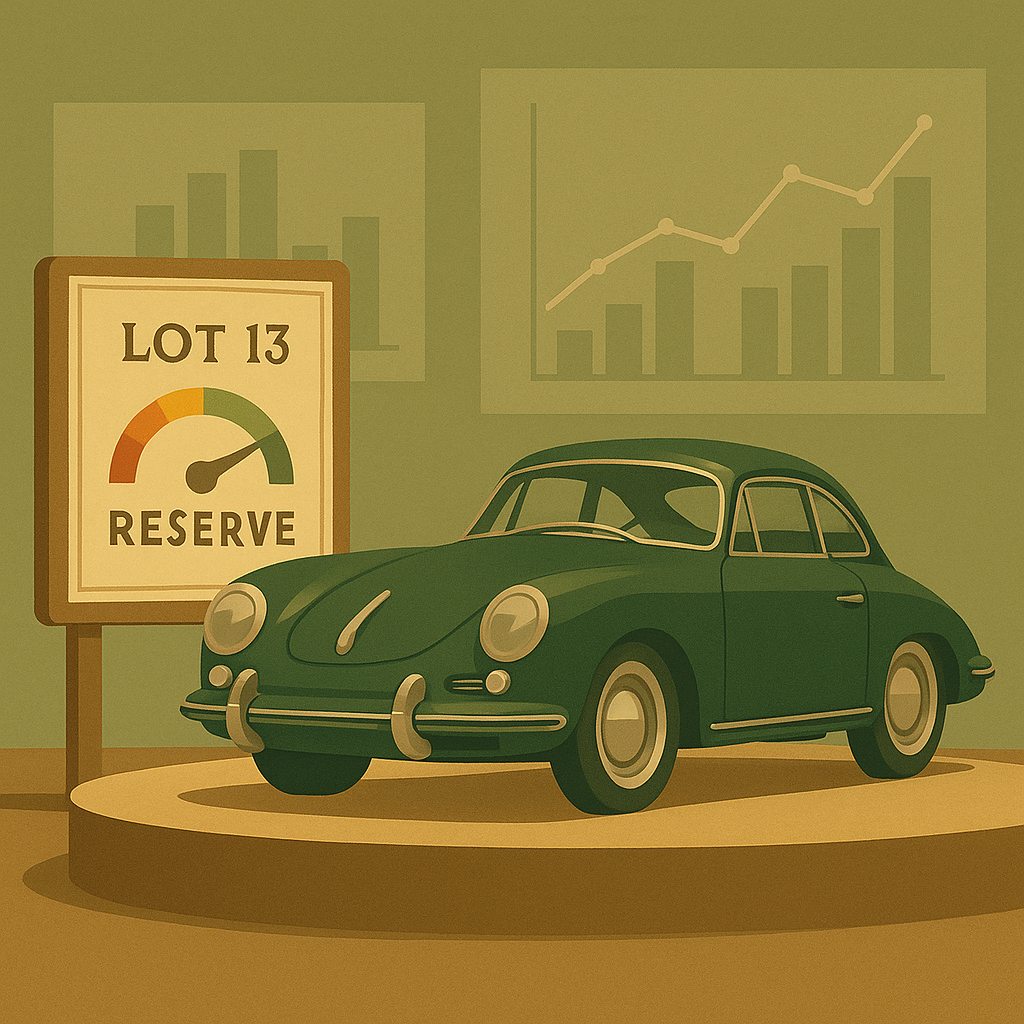Arbitrage in Online Vehicle Auctions — A Case Study

Arbitrage in Online Vehicle Auctions — A Case Study
How a track-ready Camaro ZL1 1LE moved from an enthusiast auction to retail—and what that spread tells us about opportunity, risk, and timing.
The setup
A 2019 Chevrolet Camaro ZL1 1LE sold on Bring a Trailer for $58,500 on October 7, 2025; the result shows 25 bids, 7,228 views, and 742 watchers.
Within days, a South Florida dealer advertised what appears to be the same car—“SILVER ICE METALLIC M6 ZL1 1LE”—showing 12,129 miles, VIN 1G1FJ1R66K0113855, and an asking price of $71,998.
Raw spread (auction to retail)
- Hammer (BaT): $58,500.00
- Dealer ask: $71,998.00
Gross delta: $13,498 (~23.1% above hammer)
A reseller’s true acquisition includes the BaT buyer’s fee (generally 5% with a $250 minimum and $7,500 cap), plus transport and any light reconditioning. At a $58.5k hammer price, the fee is $2,925; add, say, $1,200 shipping and $800 reconditioning, and the all-in price lands near $63.9k, implying an $8.1k spread to the ask before lot overhead and time value.
Why the spread exists
Audience & use case. BaT’s audience is comfortable with focused, track-leaning builds and dense photo/report sets; retail buyers pay for immediacy, test drives, trade-ins, and financing. That convenience premium can lift retail asks well above hammer+fee for the same VIN.
Friction vs. confidence. Auctions require wires, shipping, and a tolerance for small unknowns; retail wraps those frictions into the lot experience and monthly payment.
Timing noise. Close windows, comment velocity, track tires/cosmetic notes, or thin underbody photos can suppress final bids relative to retail expectations—especially if two top bidders don’t overlap in the last minutes.
How we matched it
The BaT result and the dealer page align on model/trim (ZL1 1LE), transmission (manual), color (silver), mileage band (~12k), and the dealer page explicitly lists the VIN above. That convergence is sufficient for an educational arbitrage study, even though public pages alone can’t prove chain-of-custody.
Risks & realities
- Ask ≠ sale. Discounts, trade-ins, and rate buy-downs can shrink spreads materially.
- Holding risk. Flooring interest, insurance, and calendar time eat margin.
- Spec sensitivity. Track-tilted cars, may need retail-friendly rubber/alignment to broaden appeal.
- Disclosure gap. Auctions often show more history than a dealer presents; it is the retail buyers burden to research the car.
-
The arbitrage playbook (repeatable)
- Track high-liquidity specs (ZL1 1LE, GT350R, CTR, 997.2, Land Cruiser 100/200, etc.).
- Log VIN + spec for every target; monitor both auction results and regional retail inventory.
- Flag under-FMV closes (especially with niche tires or minor cosmetic notes) for potential resell.
- Scan retail within ~2 weeks for the same VIN/spec popping up near you.
- Model the all-in: buyer’s fee (5% with $250 min / $7,500 cap for cars), shipping, recon—then compare to retail asks to see if the spread survives reality.
What this says about today’s market
Enthusiast auctions are generally efficient—but focused builds can under-clear when the last-minute bidder overlap isn’t there. Meanwhile, retail convenience retains pricing power, particularly for headline specs with clean histories.
Takeaways for BidBud users
- Outcome-delta alerts. When a watched spec clears below your FMV band, surface nearby retail comps to estimate a flip spread in real time.
- Friction-aware math. Always show true cost basis (fee + shipping + reconditioning) beside local asks.
- VIN trail assist. Auto-matching VIN/spec across marketplaces helps confirm when a retail listing appears to be the same post-auction car.
Sources: https://bringatrailer.com/listing/2019-chevrolet-camaro-coupe-21/, https://www.1of1motorsports.com/details-2019-chevrolet-camaro-2dr_coupe_zl1-used-1g1fj1r66k0113855.html




